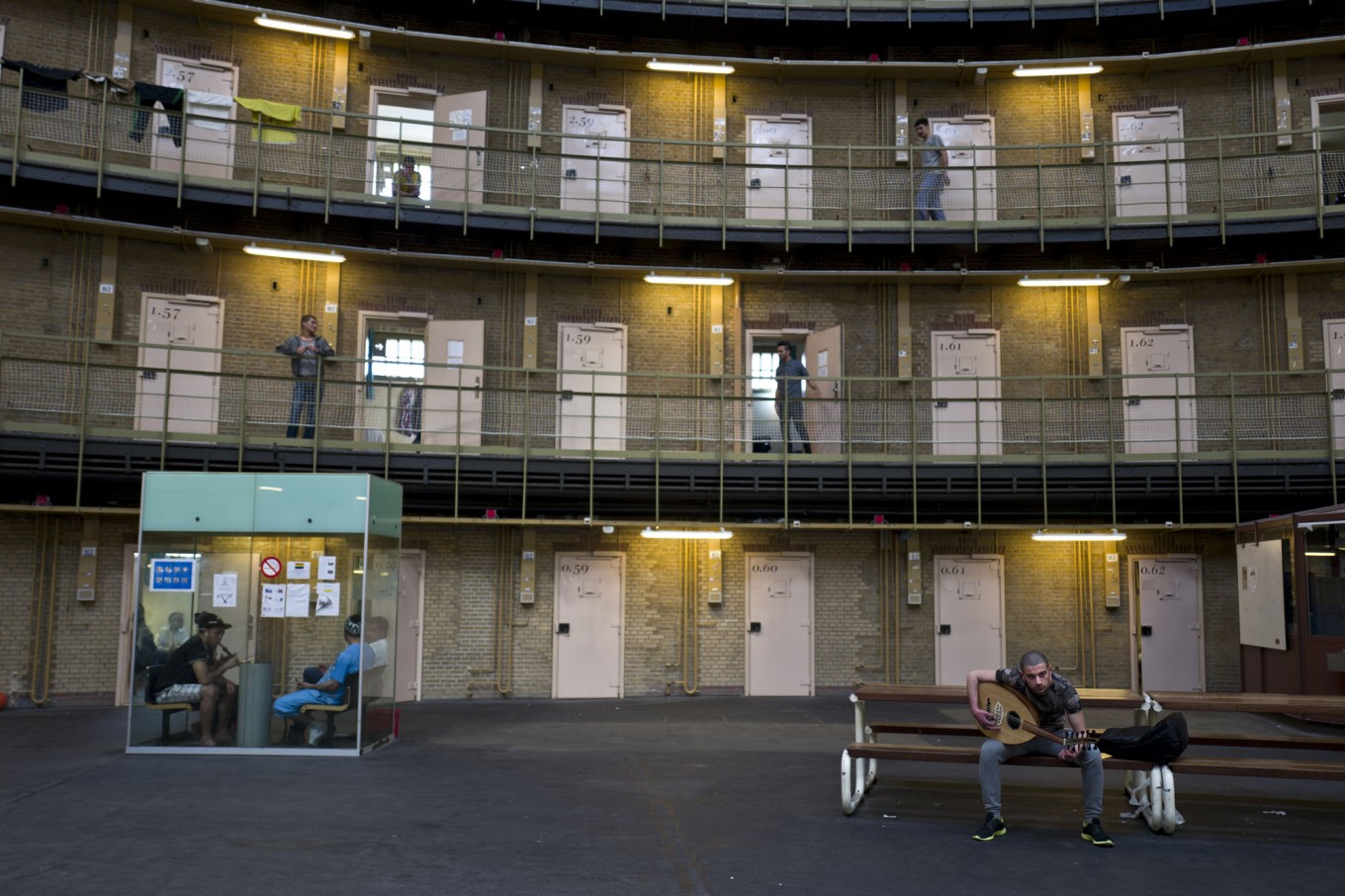Netherlands To Build Low-Security Detention Centers For Asylum Seekers

Table of Contents
Rationale Behind the New Low-Security Detention Centers
The Dutch government's decision to transition to low-security detention centers for asylum seekers stems from a multifaceted rationale focusing on a more humanitarian approach and improved cost-effectiveness. The current system, relying heavily on high-security facilities, is deemed both expensive and detrimental to the mental well-being of asylum seekers.
- Reduced Costs: High-security facilities incur significant expenses in terms of staffing, security measures, and infrastructure. Low-security centers promise substantial cost savings in the long run.
- Improved Mental Well-being: The less restrictive environment of a low-security center is anticipated to improve the mental health of asylum seekers, reducing stress and trauma associated with traditional detention.
- Enhanced Integration: Open or semi-open facilities promote easier integration into Dutch society. Asylum seekers can have more opportunities to interact with the community and access resources necessary for successful integration.
- Focus on Rehabilitation and Support: The emphasis shifts from punishment to rehabilitation and support. Centers will offer access to crucial services like legal aid, language classes, and job training, facilitating a smoother transition into Dutch life.
- Streamlining the Asylum Process: By providing better access to resources and support within the detention center, the asylum application process itself is expected to become more efficient.
The Dutch government’s official statements highlight the need for a more humane and effective asylum system, emphasizing the long-term benefits of integration and the reduced costs associated with this new approach.
Features and Design of the New Facilities
The planned low-security detention centers for asylum seekers in the Netherlands will differ significantly from traditional high-security prisons. The design prioritizes a humane environment while maintaining appropriate security measures.
- Open or Semi-Open Facilities: Unlike traditional prisons, these centers will feature open or semi-open designs, allowing for greater freedom of movement and interaction with the surrounding community.
- On-site Support Services: Access to vital services will be readily available within the centers themselves. This includes legal aid to navigate the complex asylum process, language classes to facilitate communication, and job training programs to enhance employment prospects.
- Community Integration: The facilities will be designed to encourage community engagement. Local organizations and volunteers may be involved in providing support, fostering a sense of belonging.
- Balanced Security Measures: While prioritizing a humane atmosphere, robust security measures will be implemented to prevent escapes and ensure the safety of both asylum seekers and staff. This could include electronic monitoring, controlled access points, and regular patrols.
- Housing and Amenities: The centers will provide comfortable and adequate housing, including private or semi-private rooms, communal areas, and recreational facilities.
The architectural design will be crucial in creating a supportive and secure environment that reflects the Dutch government's commitment to a humane approach to asylum seeker detention.
Potential Challenges and Criticisms
Despite the positive intentions, the transition to low-security detention centers for asylum seekers in the Netherlands faces potential challenges and criticisms.
- Public Opinion and Security Concerns: There may be public backlash or concerns regarding security, particularly regarding the potential for escapes or increased crime rates in surrounding communities. Addressing these concerns through transparent communication and community engagement will be vital.
- Integration Difficulties: Successful integration of asylum seekers into Dutch society is not guaranteed. Language barriers, cultural differences, and potential discrimination can create significant hurdles.
- Overcrowding and Escape Attempts: Proper management of the centers is crucial to prevent overcrowding and escape attempts. Effective staffing and security protocols are necessary.
- Political Opposition: The plan may face political opposition from parties with stricter immigration policies. Robust debate and public discourse will be essential.
- Effectiveness as a Deterrent: Critics may question the effectiveness of low-security detention in deterring illegal immigration. A comprehensive assessment of the policy's impact will be needed.
Comparison with Existing Asylum Policies in Other European Countries
The Netherlands’ initiative to build low-security detention centers for asylum seekers can be compared to similar policies in other European countries. Some countries have successfully implemented open or semi-open facilities, while others continue to rely on high-security detention.
- Best Practices: Examining successful models in other EU countries will reveal best practices in providing support services, managing security, and integrating asylum seekers into the local community.
- International Standards: The policy must align with international refugee law and human rights standards, ensuring humane treatment and upholding the dignity of asylum seekers.
- Case Studies: Analyzing case studies of alternative approaches will highlight successful and unsuccessful aspects of different asylum policies.
A thorough comparative analysis provides valuable insights and lessons learned from other European countries, enabling the Netherlands to refine its approach and maximize the chances of success.
Conclusion
The Netherlands' plan to build low-security detention centers for asylum seekers represents a bold shift in its immigration policy. While aiming for a more humane and cost-effective approach to managing asylum applications, the initiative faces potential challenges, including public opinion, security concerns, and integration difficulties. Its success hinges on careful planning, community engagement, and the provision of adequate support services, ensuring a balance between humane treatment and effective management of asylum seekers. Stay informed about the developments concerning the construction and implementation of these low-security detention centers for asylum seekers in the Netherlands. Follow future updates on this significant change in Dutch refugee policy.

Featured Posts
-
 Grown Ups 2 Cast Plot And Critical Reception
May 12, 2025
Grown Ups 2 Cast Plot And Critical Reception
May 12, 2025 -
 Why The Henry Cavill Wolverine Casting In World War Hulk Makes Sense
May 12, 2025
Why The Henry Cavill Wolverine Casting In World War Hulk Makes Sense
May 12, 2025 -
 Usmnt Hajis Hat Trick Dominates Weekend Football
May 12, 2025
Usmnt Hajis Hat Trick Dominates Weekend Football
May 12, 2025 -
 The Case Against John Wick 5 Diminishing Returns And Franchise Fatigue
May 12, 2025
The Case Against John Wick 5 Diminishing Returns And Franchise Fatigue
May 12, 2025 -
 Bessent Reports On Us China Trade Talks Progress
May 12, 2025
Bessent Reports On Us China Trade Talks Progress
May 12, 2025
